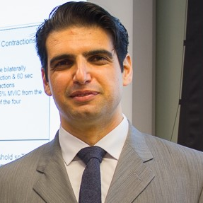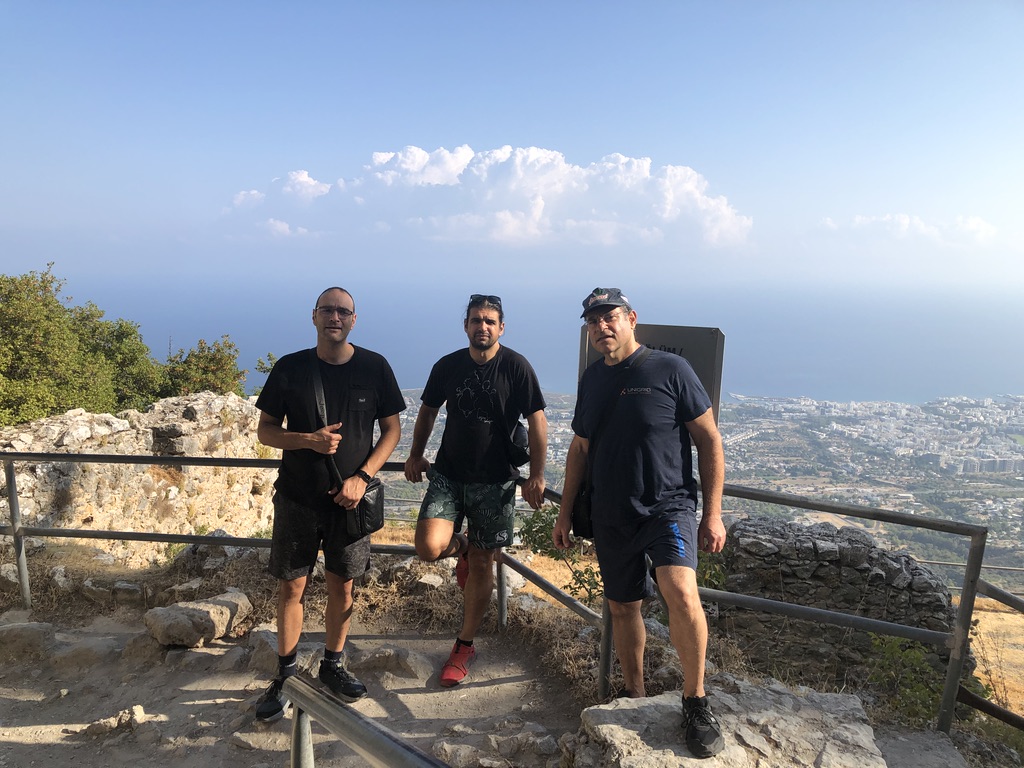
Read about Charalambos "Bobby" Charalambous, PhD and his role and research mission as a Medical Instructor in the Department of Neurology.
What are your current responsibilities within the Neurology Department? What does a typical day look like for you?
I joined the Department of Neurology October 1st 2023 and am a research faculty in the Division of Stroke and Vascular Neurology. My main responsibility is to conduct high quality clinical research in stroke recovery and rehabilitation. In particular, I am a motor neuroscientist, whose areas of research expertise and interests are the assessment and modulation of the motor descending pathways to both upper and lower extremities, human locomotor control and learning, neuromechanical analysis of human movement, tracking of neural and motor recovery in clinical cohorts, and use of innovative computational approaches for the analysis of neurophysiological and neuromechanical data.
A typical day will consist of writing an ongoing paper, working on an ongoing grant, collecting and analyzing data from a current project, and meetings with students and colleagues.
How and when did you first get interested in neurology? How and when did you decide to specialize in stroke and vascular neurology?
Since my graduate studies, I have been in medical schools or health related departments. As a movement science trainee, I was fascinated with how the nervous system can generate, control and learn motor actions, but also how an impaired nervous system can impair movement. Working at the Center of Achievement at California State University, Northridge introduced me to neurologically impaired patients (stroke, SCI, PD, MS, etc.). Because of that experience, I decided to focus on how the nervous system plans, generates, controls and learns movement. Having that knowledge, then I can elucidate the underlying mechanisms of motor recovery and develop novel precision neurorehabilitation therapeutics for regaining and improving mobility for patients with neurological disorders, in particular stroke.
You studied health and rehabilitation sciences for your doctorate. What topic(s) did you focus on for this work, and how does it tie in to your perspective performing stroke research?
Given that I was a PhD student in the Health and Rehabilitation Science program, I took the functional limitations path. Specifically, I was very interested in how motor cortical areas contribute to walking recovery after stroke. Using noninvasive brain stimulation tools and neuromechanical approaches, I investigated the corticospinal connectivity to ankle antagonist muscles, plantarflexors and dorsiflexors; two muscle groups that are functionally important during walking. I found that after stroke, the corticospinal drive to the paretic plantarflexors is not task-dependent, whereas the corticospinal drive to dorsiflexors is task-dependent (i.e., walking). This work advances our understanding of the role of the corticospinal drive to ankle antagonist muscles during walking after stroke. Because of my doctoral work on stroke research, I was able to continue on this type of research across my three postdoctoral trainings. Taken together all that work, I am in the stage now here at Duke that I can ask fundamental mechanistic questions about the neural control of walking and locomotor recovery after stroke.
You also hold two master’s degrees in biokinesiology and kinesiology. How did you get interested in these fields, and how does this background inform your current work?
I was fortunate to complete two Master's degrees, which were similar but complementary at the same time. It was during my first Master's degree in Kinesiology at California State University Northridge where I was introduced to clinical biomechanics, rehabilitation and clinical cohorts. It was then that I realized that I should pursue a career in motor neurorehabilitaion. At the same time, I knew that in order to succeed in that field, I had to learn and acquire the fundamental theories and tenets of motor control and learning. Therefore, I completed a second Master's degree in Biokinesiology at the University of Southern California, where I studied the main theories of motor control and learning and how those theories can inform us about motor neurorehabilitation. Both degrees planted the seeds to continue my career path on the motor control and learning of walking after stroke.
What pending advance in our ability to treat or understand stroke coming in the next decade or so are you most excited by?
We are in very exciting era for the field of stroke rehabilitation. As in medicine, precision rehabilitation is the next big step towards improving a stroke patient's life. It is crucial for a specific patient to receive the right treatment at the right time. Therefore, we need to understand the fundamental mechanisms of motor recovery across the stroke timeline. By employing this strategy, we can identify the temporal patterns of recovery for specific impairments. Then, we can develop novel precision neurorehabilitation strategies for regaining and improving mobility after stroke. As a member of the Division of Stroke and Vascular Neurology, the overarching aim of my research is to understand the plasticity of the descending motor pathways as it relates to sensorimotor function of walking and how to harness that plasticity to promote walking recovery in people post-stroke. My research vision is to fill the existing knowledge gap on the role of the motor descending drives during locomotion and subsequently to progress and develop mechanism-driven strategies to enhance locomotor performance and recovery in individuals with stroke, so they can achieve safe, independent, and efficient walking for longer, healthier lives.
What do you enjoy most about your work?
I do enjoy the vibrant environment of the university. Also, I do enjoy working with both scientists and clinicians from multidisciplinary backgrounds to answer fundamental research questions related to motor recovery after stroke.
What’s the hardest part of your job?
There is not one because my job is my passion.
What passions or hobbies do you have outside of Duke?
Traveling and road trips; exercise.
